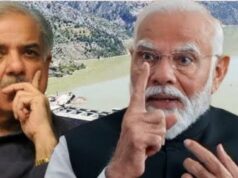ASEAN region’s economic resilience and what it means for small states

By
Lynn Ockersz
The increasing centrality of the ASEAN region to the foreign policy of the US was underscored in the aftermath of the complete US troop withdrawal from Afghanistan on August 15 last year when Vice President Kamala Harris chose to make Singapore her first stopover in an ASEAN-wide, bridge-strengthening tour. The choice of Singapore shouldn’t come as a surprise when the state’s extraordinary economic robustness is considered.
Current economic statistics clinch the point: a recent update on Singapore’s economy reproduced in this newspaper on January 4, quoting Singapore’s Ministry of Trade and Industry (MTI) said that the country’s economy grew 7.2 per cent last year, ‘the most since 2010 and higher than earlier estimates.’ It is said to be the state’s fastest growth rate in more than a decade. What makes this growth figure particularly notable is the fact that it has been achieved in the teeth of an Omicron variant surge.
MTI was quoted as stating with regard to Singapore’s manufacturing sector during the final quarter of 2021, for example, that growth in the sector ‘was supported by output expansions in all clusters, in particular, the electronics and precision engineering clusters amid sustained global demand for semiconductors and semi-conductor equipment.’ Thus, is underscored Singapore’s renown as an electronics technology giant, besides its ability to meet global demand amid international economic constraints of an unusual nature.
Given the economic ‘synergies’ between Singapore and other countries of the region and outside it, Singapore’s successes could be considered as emblematic of ASEAN’s continued economic strength, setbacks triggered by the pandemic notwithstanding. Little wonder that the US is prioritizing its economic and political links with ASEAN as pivotal to its continuance as a major world power. All in all, it could be said that the US is giving its foreign policy a sharp Southeast Asia-ward tilt.
To be sure, this foreign policy tilt would not be occurring at the cost of the US’ continued multi-dimensional links with Europe, but it is sufficient proof of the US’ awareness as to where its most vital interests would lie in the years ahead. Asia is the region to watch closely with regard to the world’s economic future in particular and prescience ought to dictate to the US and other major Western powers the advisability of anchoring their foreign and economic policies in the growth centres of the Asia-Pacific.
Some foreign policy analysts of the Asian region have been sufficiently quick to seize on these epochal developments. There is Parag Khanna, for instance, who writes extensively and insightfully about the ‘Asianization of the world’ in his book ‘The Future is ASIAN’ (2019 Paperback edition published by Weidenfield & Nicolson), a must read, one may say, for foreign policy makers anywhere.
Essentially, the author’s position is that Asia is making a comeback, after centuries of being dwarfed by the West, to the heart of world affairs. One would not be stating anything particularly new by saying that prior to the onset of Western colonialism, Asia was the ‘engine of growth’ of the world. Imperial domination by the Western powers effectively stunted Asia’s economic dynamism and growth for centuries. This return to centre stage is being driven by Asia’s current economic robustness and vibrancy in the main. Quite appositely, Khanna refers to Singapore as ‘the unofficial capital of Asia’; of such magnitude are Singapore’s economic successes.
Given that the ASEAN region in particular is coming to its own steadily as a principal driver of global economic growth, it would be only a matter of time before the dominance of the US and China in the world economy comes to be blunted. The World Bank was on record last year as stating that 2021 growth was expected to accelerate to 5.6 per cent, driven in the main by the US and China. Considering that ASEAN countries, such as Singapore, are back on track as vibrant economies, China would likely lose some of its predominance in Asia as time goes by. In fact, economic multipolarity rather than unipolarity could be expected to strongly emerge in Asia.
Given this backdrop, small states of South Asia, particularly Sri Lanka and the Maldives, would be compelled to chart their future foreign policy trajectories with the utmost perceptiveness. Right now, Sri Lanka is being compelled to make costly compromises in its relations with some regional powers to fend off a range of economic shocks that are upon it. Valuable real estate and assets, for instance, are being seen as bartered tamely for short term financial survival. It would not be incorrected to state that Sri Lanka’s national pride is taking a beating in the process. Too bad for a founder member of NAM.
Asia’s multipolar economic environment should induce Sri Lanka into looking beyond the South Asian region to acquire the required economic sustenance to survive the current crises. While it should bolster its diplomatic links with ASEAN, it should also seek to strengthen its trade and investment ties with that region as well. In the medium and long terms lucrative ASEAN markets should be explored for Sri Lanka’s exports. A drive to diversify the island’s exports too should take hold. Rather than be reactive in the foreign policy sphere Sri Lanka should seek to be increasingly proactive. All in all, a more internationalist outlook is expected of Sri Lanka in the present crunch. Increasing the influx of ASEAN-based tourists to the island is also an option to be explored.
In contrast to Sri Lanka, the Maldives could be said to be on a steadier foreign policy trajectory. Its proactive involvement in the area of foreign policy has won for it the presidency of the UN General Assembly; a rare honour for a small state. Knowing the importance of maintaining utmost cordiality with its closest neighbours, it has over the years maintained close relations with India. This amounts to being down-to-earth and pragmatic in foreign policy orientation. It is possible to follow such a policy line without compromising one’s integrity. As a consequence, it has struck- up a mutually-beneficial security alliance with India.
All in all, states big and small in South Asia need to be aware of the emerging importance of the Asia-Pacific to the general wellbeing of the world. Pragmatic and broad-based ties are called for.




